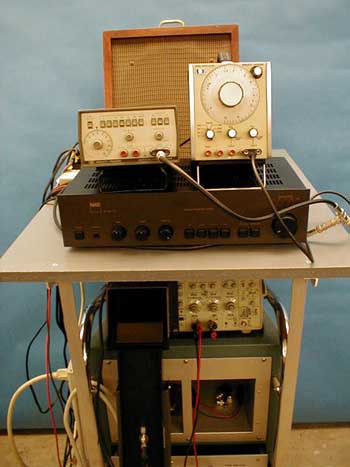Demos: 4C-03 Beats

Using two audio signal generators, an amplifier and an oscilloscope display, one can demonstrate beats when the two frequencies are nearly equal. With the appropriate connections, one can feed the two generators into x-y axes of the scope and generate Lissajous patterns.
Directions: Consult with the lecture-demo technician for operation. The patterns are able to be projected for greater visibility. In addition to beats, you can show the patterns associated with pairs of tones such as thirds and fifths, for example.
Suggestions for Presentation: It would be helpful if you have done the demonstration 1S -18 (Turntable Oscillator). By displaying the paper output showing beats from that demo, you can compare it with the pattern on the oscilloscope screen. Also, if you have illustrated beat phenomena with the apparatus in 4B - 11 (Resonance Boxes), you can compare the sound they heard there with the sound they hear in the present set-up.
The Lissajous patterns are beautiful to watch develop, so if you have the time and patience to set this up, it will be worth it.
Applications: Beat phenomena are used extensively in the tuning of musical instruments and matching tones.
Last Updated: Nov 30, 2023 11:25 AM